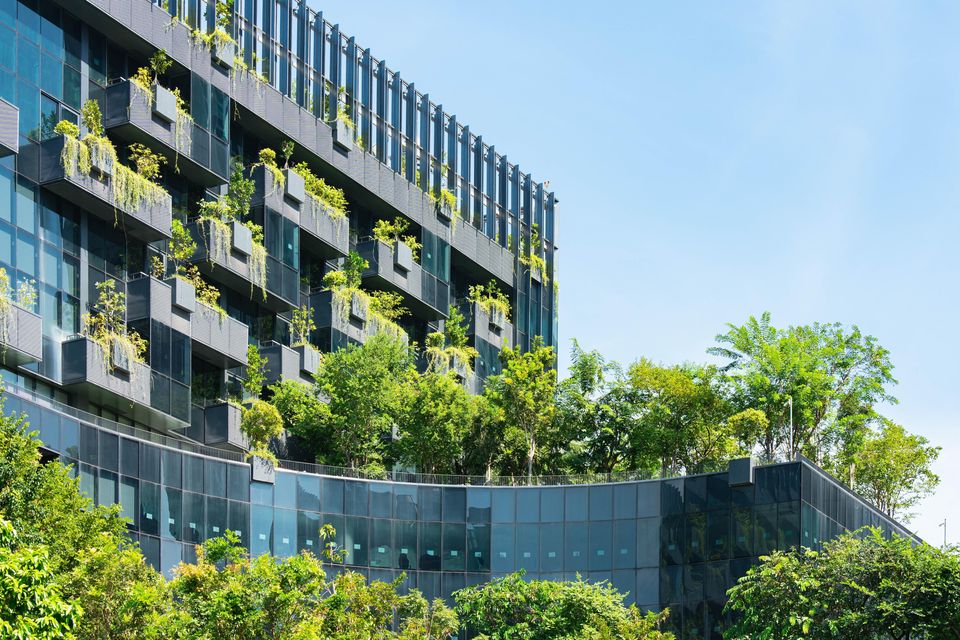After the roughest year in over a decade, prospects for the office market in 2024 are starting to look up
Commercial property
Higher interest rates, WFH initiatives, rising fit-out costs and tech-sector redundancies have all served to reduce market activity. Photo: Getty Images
It was always envisaged that 2023 would be a challenging year for the office market, but the outlook for 2024 is more positive.
Surprisingly, take-up across the Dublin office market for this year will fall below the respective tallies of the Covid years of 2020 and 2021.
In fact, we have to go back to 2010 to find an annual take-up below the projected 1.3m sq ft expected in 2023. Coupled with an increase in the availability of sublet space, this has seen the vacancy rate for Dublin reach its highest level in almost 10 years.
Photo: Getty Images
Market conditions in the past 12 months have provided a perfect storm for occupier procrastination.
A combination of higher interest rates, work-from-home (WFH) initiatives, rising fit-out costs, tech-sector redundancy impacts, and general economic uncertainty has served to reduce market activity generally.
To give some context, there were 12 transactions in excess of 50,0000 sq ft in 2022 compared to a single letting north of this in 2023. This trend of reduced activity is generally replicated across all major US and European cities.
The vacancy rate for Dublin reach its highest level in almost 10 years
Occupier demand has generally been dominated by financial and professional services sectors who see opportunities for strategic take-up as the tech, media and telecoms (TMT) sector recalibrates.
Occupiers have become increasingly concerned about fit-out costs which has resulted in many choosing to extend their lease on a short-term basis or relocate to short-term sublet space to alleviate immediate cost concerns.
The upshot of this is a continued focus on quality sublet space. Only two of the eight lettings between 10 and 20,000 sq ft so far this year have taken Cat A space, demonstrating occupier focus on short-term stop-gap solutions.
Photo: Getty Images
This trend is likely to fuel increased demand for new environmental, social, and corporate governance (ESG)-compliant space in the coming years, at a time when the supply of new Grade A office buildings is certain to reduce significantly.
Simultaneously, speculative new development (thus availability of quality office space) has already reduced significantly.
Outlook - 2024
The outlook for 2024 is increasingly more optimistic. Headline rents have remained robust, especially around the St Stephen’s Green hinterland where demand is particularly strong.
Office-based employment is continuing to rise.
Anecdotally, the number of occupiers starting to increase their footprint is starting to rise and their focus is centred on better quality workspace in central locations for their returning employees.
The quality of vacant space is likely to decline as the best space is picked off
The fall in inflation has led to greater transparency on fit-out costs encouraging more activity.
Our office is tracking a large number of enquiries in excess of 50,000 sq ft, totalling almost 3m sq ft of active demand, which is expected to transact in 2024/25.
EY, Deloitte, BNY Mellon, Eversheds Sutherlands and Mason Hayes & Curran are some of the known live requirements for office space of scale, while other sizeable relocations are expected.
Furthermore, we expect a number of state and semi-state agencies to relocate from older buildings in to new ESG-compliant alternatives.
Photo: Getty Images
In total, we estimate that there are over 1.2m sq ft of office lettings reserved and likely to transact in 2024, demonstrating a reasonable tailwind for the office market to build on as we head into the new year.
We can expect continued strong occupier focus on sublet space on a short-term basis.
The better sublet space is generally being accounted for as the flight to quality continues, leaving a balance of largely obsolete space that may struggle to attract interest. The quality of vacant space is likely to fall as the best space is picked off.
This inevitable increased activity in 2024 will serve to improve take-up and reduce the vacancy rate as minimal new developments emerge to satisfy this growing demand.
Savvy occupiers are being encouraged to take advantage of prevailing market conditions
Speculative development is limited to those already on site and occupiers who procrastinate will start to become disappointed with the number of options available to them.
Savvy occupiers are being encouraged to take advantage of prevailing market conditions as landlords are undoubtedly more confident of an improved market performance beyond 2024.
Shane Duffy is a director of offices at Savills Ireland
Join the Irish Independent WhatsApp channel
Stay up to date with all the latest news


















